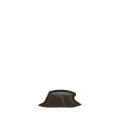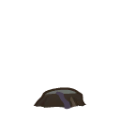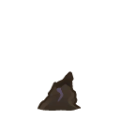Polux tree
| This article relates to content added by Biotech (DLC). Please note that it will not be present without the DLC enabled. |
| This article is a stub. You can help RimWorld Wiki by expanding it. Reason: Artificial building mechanics, analysis. |
Polux tree
After generations of exposure, these trees have evolved to metabolize pollutants. By drawing pollutants from the ground through wide root networks, they slowly clean polluted terrain in their vicinity. However, they cannot do this if buildings are constructed over their roots.
Unlike most methods of cleaning polluted terrain, polux trees do not create toxic wastepacks.
Base Stats
Plant Stats
The Polux tree is a tree added by the Biotech DLC. It grows within polluted environments and is capable of absorbing pollution in an area similar to a pollution pump (7 tile wide circle). Unlike pollution pumps, polux trees do not generate any toxic wastepacks after absorbing the surrounding pollution. This makes them a safer way to remove pollution.
Growing[edit]
Like the gauranlen tree![]() , the polux tree does not naturally occur in any ecology. It naturally appears on maps with pollution, and can be spawned by the "polux tree" event,
, the polux tree does not naturally occur in any ecology. It naturally appears on maps with pollution, and can be spawned by the "polux tree" event,
Every 15 days, the current pollution level and current tree population are checked. If the current amount of trees are below the assigned value, a tree may be spawned.[Chance?] These numbers also determine the amount of starting trees in your colony.
- No pollution (0-25%): 0 polux trees
- Light pollution (25%-50%): 0 polux trees
- Moderate pollution (50%-75%): 1 polux tree
- Extreme pollution (75%-100%): 3 polux trees
Polux trees never spawn within 16 tiles of each other.
Polux seeds can also be bought from traders, obtained from quest rewards or looted from hermetic or sealed crates. These seeds can be planted on any tile with a fertility stat. It cannot be planted closer than 4 tiles to another polux tree, or within 1 tile from any other tree or cactus. It also cannot be placed within 1 tile of a growing zone.
Summary[edit]
- Cleans 1 tile of pollution every 25,000 ticks (10 in-game hours).
- Needs 150,000 ticks (2.5 in-game days) to clean 1 deteriorated toxic wastepack (6 tiles).
- Is only 20% as fast as a wastepack atomizer.
Polux trees are considered "super", meaning that pawns with the Trees: Desired precept![]() will receive the "amazing tree" thought after seeing one. Despite both being dendrovores, thrumbos will not eat polux trees, while alphabeavers will. Polux trees are immune to blight.
will receive the "amazing tree" thought after seeing one. Despite both being dendrovores, thrumbos will not eat polux trees, while alphabeavers will. Polux trees are immune to blight.
They technically take damage from toxic spewers and toxic fallout, but regenerate faster than they take damage.
Analysis[edit]
| This section is suggested to be rewritten. Reason: Missing detail on use, utility as natural spawns, and pro-use side etc Also what is there is rough. You can help the RimWorld Wiki by improving it. |
The easiest way to use polux trees is to plant them nearby, and leave toxic wastepacks in a stockpile zone next to the tree. Wastepacks outdoors deteriorate into pollution every 8 days assuming no rain or cold temperatures, creating 6 tiles of pollution.
Every day, a polux tree cleans 2.4 tiles. Assuming the wastepacks is only Outdoors and Unroofed, without being rained on, then a wastepack will suffer 4 points of deterioration per day. This means that one stack will fully decompose over 25 days from health point loss, as opposed to taking 40 days from innate decay (8 days per pack). Each wastepack generates 6 tiles of pollution, for a total of 30, or 1.2 per day. Meaning that a single polux tree can have a stockpile of 2 stacks of wastepacks deteriorating without being overwhelmed. However, this assumes that no rain or other environmental factor ever increases the deteriorating rate of the packs. Unfortunately, toxic wastepacks on polluted tiles multiply their daily deterioration by 150% to 6 per day instead of 4, meaning that this system will always produce slightly more pollution than the tree can handle as the remaining wastepacks are temporarily affected each time one decomposes. If the wastepacks are directly adjacent to the tree, this should mean that in a worst-case scenario, the tree clears this pollution back in 30 hours, meaning only 2-3 additional points of degradation every 8 days. This may be partially or fully offset by other minor inefficiencies in the system, such as the time it takes to deliver new wastepacks after they decompose. Depending on your setup, you may want to pause hauling of new wastepacks to the tree for a day or two every few years to clear any built-up backlog.
As an alternative to this system, you can consider placing the stockpile next to a natural rock face to act as a support for a roof to cover the stockpile, which reduces daily deterioration to only 2 per day. If you do not want to micromanage your setup, roofing over one of the wastepacks should make the cumulative decay for both stacks fall back below the tree's throughput, even accounting for the temporary bump in decay from polluted tiles. It is also possible to build a room that encloses the polux tree without infringing on its exclusion zone (while being partially unroofed). If you ensure that all wastepack stacks that are under roofed tiles they will not suffer hit point deterioration, and since they are now indoors, each stack will have one pack deteriorate every 16 days. Deteriorating every 16 days, generating 6 tiles of pollution each time, means that each stack of wastepacks using this setup will generate 0.4 tiles of pollution daily, meaning the tree using this system can support the decay of 6.4 stacks.
An other easy (and free) way of using the tree is to dump your pollution in a tile five to seven tiles away from yours, and when high enough in pollution, settle it as second base. This'll give access to 3 free trees and can use transport pods without penalty [Verify]. Still a lot should be considered before settling a 2nd base and there's a lot more uses for a second base than just 3 polux trees and other uses should be considered for it.
Due to the tree's relatively low waste-clearing speed and the fact that low amounts of pollution do not have much impact on your colony, there is an argument that polux seeds are not worth their ![]() 1,200 price tag. As long as the pollution is physically far away, the only negatives of it are wastepack infestations and acidic smog. Polux trees do not stop infestations, as they occur on wastepack destruction, not pollution in general. Meanwhile, acidic smog can be mitigated almost entirely by using sun lamp greenhouses and non-solar energy. Even then, at only 10% or so pollution (200 wastepacks), smog is a rare event.
1,200 price tag. As long as the pollution is physically far away, the only negatives of it are wastepack infestations and acidic smog. Polux trees do not stop infestations, as they occur on wastepack destruction, not pollution in general. Meanwhile, acidic smog can be mitigated almost entirely by using sun lamp greenhouses and non-solar energy. Even then, at only 10% or so pollution (200 wastepacks), smog is a rare event.
That being said, these trees don't contribute to your colony wealth, inviting lower raid points than the ![]() 2,440 wastepack atomizer does. In very long runs, a tree can absorb up to a considerable amount of waste. For example a single polux tree can absorb 245 wastepack in roughly 10 years which is equivalent to a single cooler's capacity in hot biomes, it is a lot when considering that a cooler takes a 9*9 area and 200W of constant power while tree's only cost is buying and setting it up and it can clean even more pollution.
2,440 wastepack atomizer does. In very long runs, a tree can absorb up to a considerable amount of waste. For example a single polux tree can absorb 245 wastepack in roughly 10 years which is equivalent to a single cooler's capacity in hot biomes, it is a lot when considering that a cooler takes a 9*9 area and 200W of constant power while tree's only cost is buying and setting it up and it can clean even more pollution.
A polux tree can clean a bit more than 1 toxifier generator's worth of waste, allowing for a form of clean energy. The tree cannot be placed near the generator, making you use a pollution pump and have colonists haul it to the tree. Although given how pollution doesn't spread under natural rock, it is possible to get around this by having the generator inside a 2*2 hole in the mountain with two sides open (one for wires, one for pollution) and a tree nearly overlap the generator to clean additional pollution also to get rid of artificial building limitation it can be placed in farmlands (and remove growing zone from under tree. Still, clean energy should be compared to 1. leaving wastepacks far from your colony and buying the polux seeds later, or 2. freezing the wastepacks. If you have no better use for silver, then you might as well buy the trees.
Gallery[edit]
Chopped polux stump variant A
Chopped polux stump variant B
Smashed polux stump variant A
Smashed polux stump variant B
Version history[edit]
- Biotech DLC Release - Added.
- 1.4.3555 - Polux seeds introduced, which can be planted on polluted ground.







